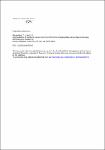Segmentation of Confocal Raman Microspectroscopic Imaging Data Using Edge-Preserving Denoising and Clustering
Alexandrov, Theodore
Lasch, Peter
Over the past decade, confocal Raman microspectroscopic (CRM) imaging has matured into a useful analytical tool to obtain spatially resolved chemical information on the molecular composition of biological samples and has found its way into histopathology, cytology, and microbiology. A CRM imaging data set is a hyperspectral image in which Raman intensities are represented as a function of three coordinates: a spectral coordinate λ encoding the wavelength and two spatial coordinates x and y. Understanding CRM imaging data is challenging because of its complexity, size, and moderate signal-to-noise ratio. Spatial segmentation of CRM imaging data is a way to reveal regions of interest and is traditionally performed using nonsupervised clustering which relies on spectral domain-only information with the main drawback being the high sensitivity to noise. We present a new pipeline for spatial segmentation of CRM imaging data which combines preprocessing in the spectral and spatial domains with k-means clustering. Its core is the preprocessing routine in the spatial domain, edge-preserving denoising (EPD), which exploits the spatial relationships between Raman intensities acquired at neighboring pixels. Additionally, we propose to use both spatial correlation to identify Raman spectral features colocalized with defined spatial regions and confidence maps to assess the quality of spatial segmentation. For CRM data acquired from midsagittal Syrian hamster (Mesocricetus auratus) brain cryosections, we show how our pipeline benefits from the complex spatial-spectral relationships inherent in the CRM imaging data. EPD significantly improves the quality of spatial segmentation that allows us to extract the underlying structural and compositional information contained in the Raman microspectra.
Dateien zu dieser Publikation
Keine Lizenzangabe

